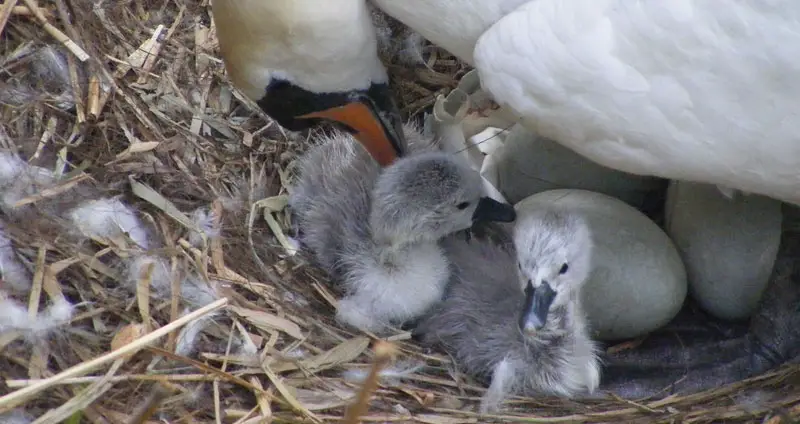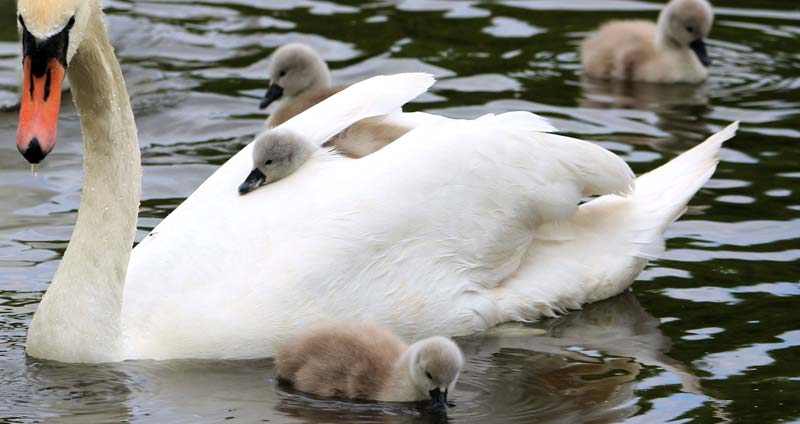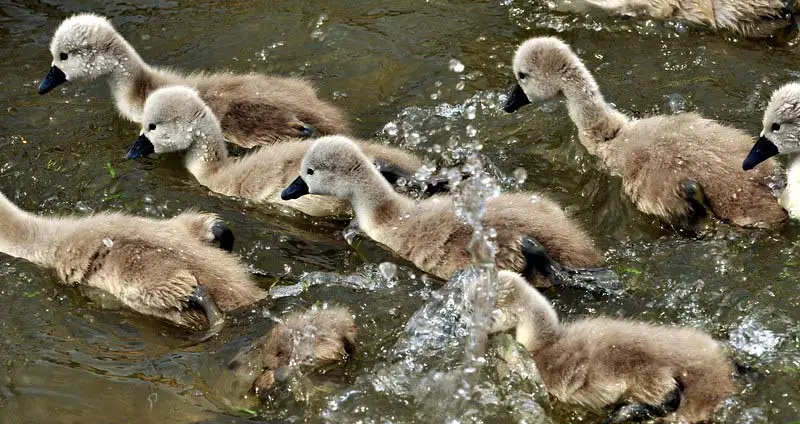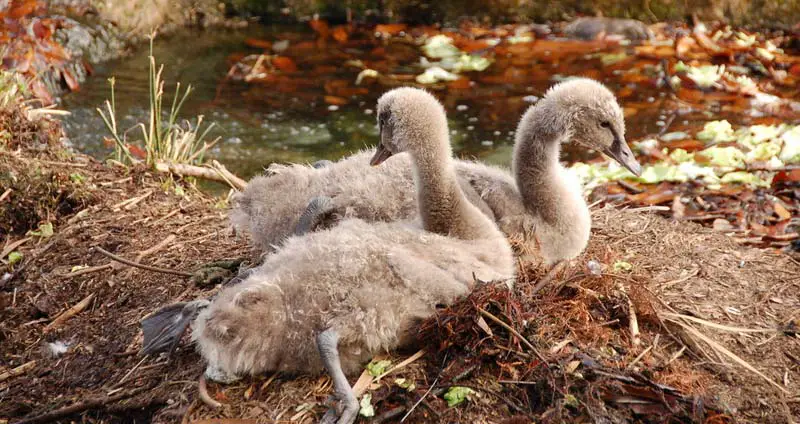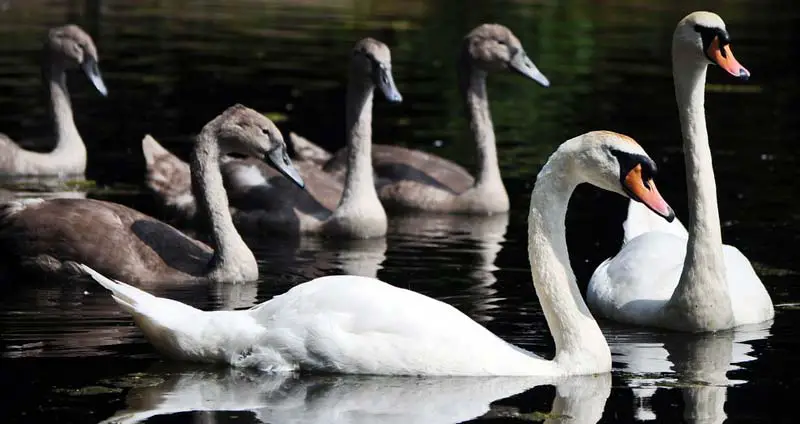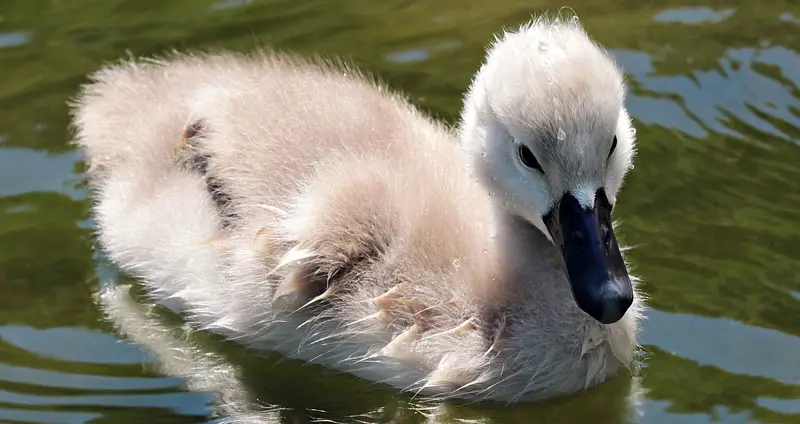With swans being such beautiful and elegant creatures, it’s no surprise that baby swans start out incredibly cute.
In addition to the fact that baby swans are adorable, they’re also incredibly interesting to learn about and observe. Specifically, their upbringing and the way that their parents raise them is phenomenal and uncommon in the animal kingdom.
Read on to learn all about how baby swans start their life and begin growing into the beautiful, yet terrifying, creatures that are swans.
Table of Contents
What Is A Baby Swan Called?
A baby swan is called a cygnet (pronounced ‘ sig-nit’).
This name stems from the Latin word “cygnus“, meaning swan. The “et” at the end roughly implying “little”. Hence, “little swan”, or baby swan.
Baby swans aren’t the only swans with strange names, though!
Male swans are called cobs, while female swans are called pens.
A Baby Swan’s Life Cycle
While it’s true that baby swans are cute, the main reason why they’re so interesting is that they have incredibly long life cycles compared to most other animals.
Swans will remain with their parents until they’re basically fully-grown adults. Even when they’re the same size as their parents, they remain very close by.
While it doesn’t seem like swans are in much of a rush to grow up, the way that swans treat their babies would make you assume otherwise.
Birth Of A Baby Swan
Baby swans hatch from their eggs after 34-45 days of tireless incubation by their parents. During this incubation period, the swans rarely, if ever leave the nest that they painstakingly put together.
When the baby swan emerges from the egg, the waxy layer that surrounded it within the egg still covers the cygnet. After several hours, this waxy layer dries up and starts to fall off, causing the swan to take on a fluffy, light grey appearance.
At birth, cygnets are about 2.5% of their adult size. That’s quite a bit of room for growth!
Imprinting
Right after birth, it’s no surprise that these cygnets are very weak and vulnerable. However, they’re also quite fearless, so it’s the job of its parents to guide it around and protect it from any dangers of the world.
While the cob and pen are always defensive, they’re particularly defensive and sensitive at this time because the cygnet is about to imprint on them so that they can reliably follow them around for food, shelter, and protection.
Swans have imprinted on a wide variety of animals, like ducks, and even humans in some cases! With how impressionable these cygnets are, it makes sense that the parents would be so aggressive towards anything that the cygnet could accidentally imprint on.
Surprisingly, one aspect of imprinting includes sound. The baby swan is able to hear sounds while still inside of the egg, and this helps them to start imprinting early. After hatching, cobs and pens make more sounds so that the cygnet can easily identify its parents.
With how much effort is going into imprinting, it seems as if baby swans are fairly helpless. Surprisingly, it’s quite the opposite!
Swans are precocial animals, meaning that they are born in an advanced state and can care for themselves right from the beginning.
As soon as they hatch, cygnets can see, walk, clean, and feed itself. It still needs plenty of care from its parents, but it’s relatively self-sufficient.
The First Day Alive
During their first day alive, virtually every minute is spent in the nest with the parents and any cygnets that hatched that day. After the cygnets imprint on their parents, they spend most of the time either under the pen or wandering around and exploring.
Something that cygnets will start to do is produce vocalizations. This is very important, as it’s essentially getting the parents and other hatchlings affiliated with everybody else’s calls.
These vocalizations aren’t loud, though. They’re very soft and quiet.
Another instinctual behavior that cygnets exhibit on their first day alive is preening. They’re born with a coat of mostly-waterproof down feathers, and that coat needs plenty of care in order to keep it healthy.
Other than vocalizing and preening, baby swans don’t do anything else.
Feeding isn’t a requirement at this point, as they recently absorbed a good portion of the egg yolk while hatching. This yolk provides them with food for around a week, so food isn’t necessary. They will, however, bite random objects to “test them out”.
Swimming also doesn’t happen on the first day, and if it does it’s a rare event. Cygnets will stay very close to their mother as the rest of the eggs hatch.
After they sleep through the night, the cob and pen take all of the cygnets out into the water and immediately start teaching them how to swim, find food, and climb back out of the water onto the shore.
It’s from this point that they leave the nest for good and begin their mobile lives.
Baby Swan Pictures
Understandably, most people can’t get enough of these baby swans. Below are some pictures that show the progression from baby swan to “teenager”.
